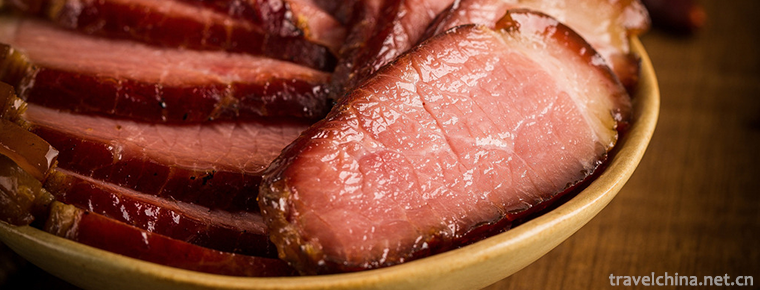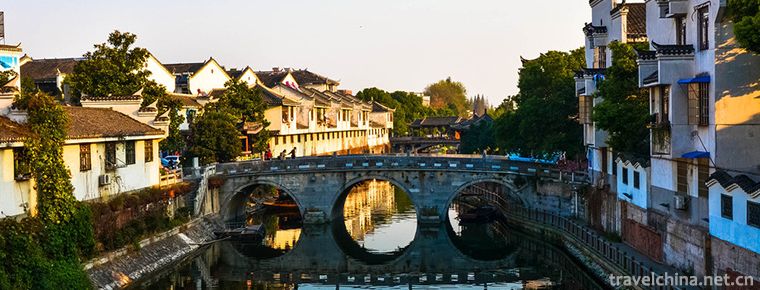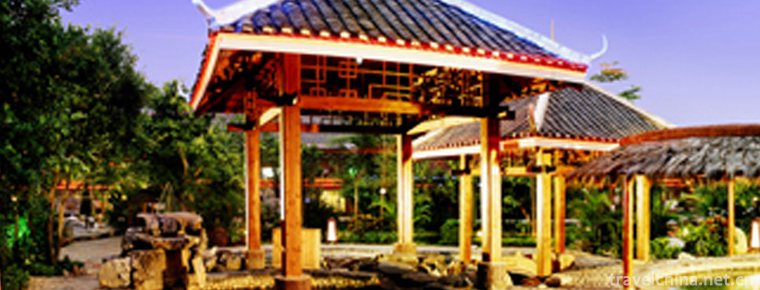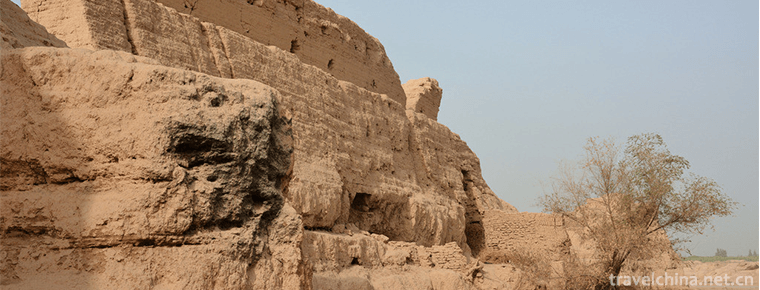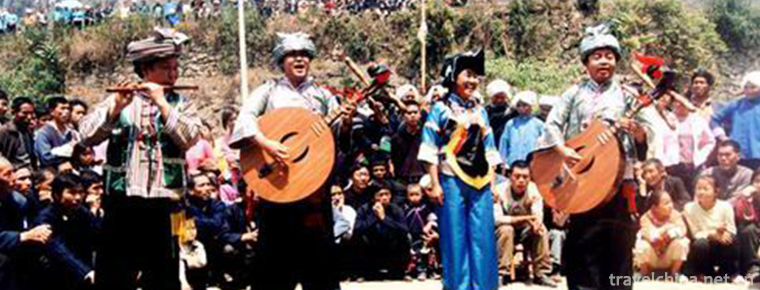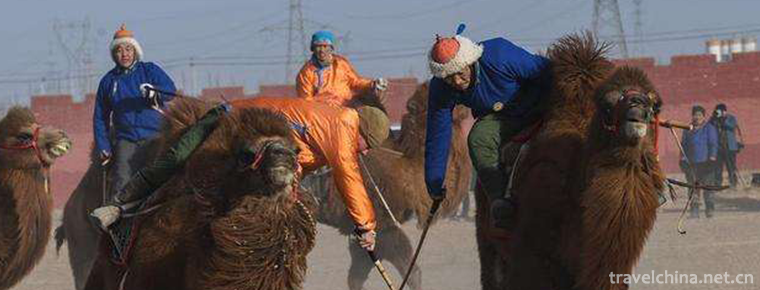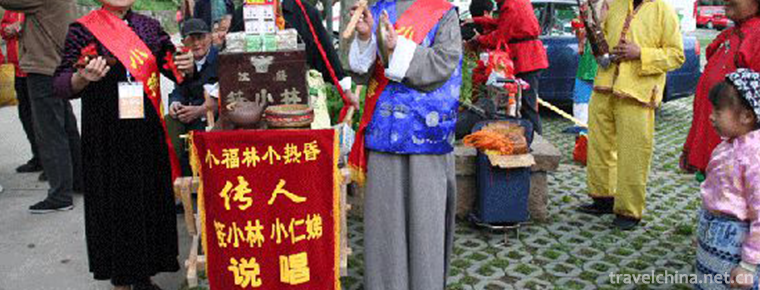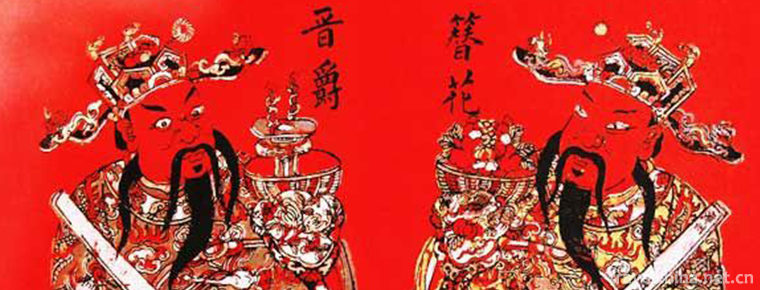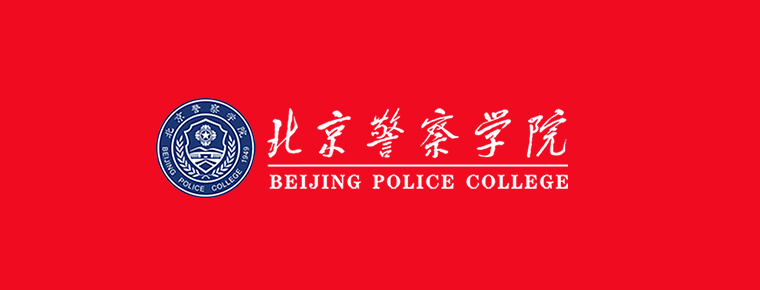Yugur Costume
Yugur Costume
Yugur costume is the traditional costume of Yugur people. Both men and women of Yugur nationality wear long gowns with high collars and large skirts. Men wear red and blue belts with waistknives, sickles and Buddhas, while women wear high-collar gowns with lace embroidered under collars, cuffs, gowns and flaps. The Satin high collar shoulder with bright red, peach red, turquoise green and turquoise blue coat is tied with red, green and blue belt, matched with coloured handkerchiefs and long boots. In winter, men and women wear fox skin snow caps and high boots; in summer and autumn, they wear white felt caps or top hats with flat cylinder tops. Women wear trumpet-shaped red caps or hats woven with Achnatherum splendens. They like to wear earrings, emerald or jade bracelets and silver rings.
On June 7, 2008, Yugur costumes were approved by the State Council to be included in the second batch of national intangible cultural heritage lists.
historical origin
According to historical legend, during the Shunzhi period of the Qing Dynasty, under the pressure of the Qing Dynasty, Yugur men were forced to stay in long braids and wear black horsewear, which was strongly resisted by the Yugur people and led to an outbreak of the anti-Qing struggle. The Qing Dynasty sent Prince Taibao General Nian Xiyao to lead the troops to suppress, massacre many people, and suppress this struggle. The custom of Yugur men wearing long braids and jackets continued until 1949. Men wear single trousers, winter full of leather made of cowhide high waist nose "hyperactivity", wearing socks. Hunters often wear leather nests made of cowhide, which are lightweight and comfortable with fur or grass. Men in Haizi also wear hand-made high-waist cloth boots with double nose beams and round heads. On the boot boots, white lines are usually worn on the blue cloth. Yugur men also wear hats. In winter, both men and women usually wear fox skin snowcaps. Nowadays, Yugur men and women usually wear snow caps with Fox skin.
Yugur men also wear jade bracelets, silver bracelets and rings in their old age. It is said that wearing arms does not hurt. Rings are usually large silver rings, with silver enamel, and beaded in the middle, worn on the ring finger. Older men also like to wear crystal brown glasses.
Costume characteristics
Yugur costumes preserve the costume characteristics of some ancient ancestors and absorb some of the costume characteristics of other nationalities, forming the unique Yugur costumes.
Material from animal husbandry
The Yugur people have been mainly engaged in animal husbandry for generations, thus forming a costume culture with the national characteristics of animal husbandry. In the early days, they lived by water and grass, nomadic in the vast Gobi Desert, lived in tents, wore white stubble sheepskin jackets or red high collar clothes and long leather boots. Its clothing materials are derived from animal husbandry itself, and the clothing style is simple, cold-resistant, sand-proof and so on.
Divide dresses and casual clothes
With the development of society, great changes have taken place in the economic structure of Yugur society. Apart from animal husbandry, agriculture, forestry and other industries have developed. Yugur people in pastoral areas still wear long gowns and leather boots, while in rural areas and towns, they mainly wear uniforms, and only wear traditional clothing on festival and festive days. Its clothes are classified into formal dress and casual dress.
The length of the clothes corresponds to the length of the body.
Yugur costume has its own national characteristics. Both men and women wear high-collar, large-breasted, right-jacket gowns, the length of which is equivalent to their own length, wearing trousers.
Zeng Liuzi
In the past, Yugur men had the custom of wearing long braids and plaiting braids with silk thread on their heads. Now they often have short hair.
A bloody hat
Yugur women's headwear is very distinctive. They wore trumpet-shaped red hats or hats woven with Achnatherum splendens. It is said that this hat is in memory of a victim heroine in the history of our nation. The red tassels represent the blood on the top of her head at the time of her sacrifice.
Women's clothing
Headwear
Yugur women's headwear has a lot of national characteristics. When a girl reaches the age of 15, wearing "Sadalgar" means that she can grow up and marry. "Sadalgar" is a square cloth made of red cloth, decorated with shells and coral of various colors.
Women's Hats
Yugur women have the habit of wearing hats. The hat is made of blanket pressed with white wool. The front edge is set with two black edges. The edge of the hat is not wide. The rear edge is slightly warped. The front edge is flat. The top of the hat is decorated with red thread spikes hanging around the top of the hat. Some are also decorated with various patterns, wearing on the head like an inverted trumpet, very chic.
The hats of unmarried girls and married women are slightly different: unmarried girls wear "Ge Yao is pinched" on their foreheads, that is, a long red cloth band with coral beads on top, and many spikes of red, yellow, white, green and blue coral and jade beads on the bottom edge, which hang like bead curtains on their foreheads. Comb five or seven hair braids with colored velvet threads tied to the back of the belt. A woman in full dress wears a flat cap with a wide rim and a bright red ribbon hanging from the top of the cap. A married woman wears a long head, that is, she combs her hair into three braids, one hanging behind her back and the left and right braids hanging from behind her ears to her chest. Head is three, tied to three braids, each of which is divided into three sections. It is connected by metal rings. It is set with silver medals, coral, agate, beads, shells and other ornaments, forming a beautiful pattern. The head should be worn with earrings aligned and down to the bottom of the robe. The length of the head depends on the height of the body.
Under the sunshine, Yugur women's hats are extraordinarily magnificent and solemn, full of national sentiment. When they walk, pearl shells and silver medals collide with each other, making a crisp, harmonious and rhythmic jingling sound, which is very pleasant to hear.
Yugur Bride Dresses
Whenever a girl gets married, the bridesmaid takes off the original girl's dress on the bride's head in front of the guests, puts on the brand-new wedding dress, and then puts on the bride's face in the cry singing led by her uncle. In the past, according to the economic conditions of the mother's family, skilled craftsmen were invited to embroider them carefully. A wedding dress is not only the affection of parents, but also the symbol of family wealth.
The Head of Yugur Women
Yugur women's head is a very refined and expensive folk handicraft. Headdress is the headdress, which Yugur calls "Kaimen Baishi". Head fabrics are exquisite and the workmanship is quite fine. Red coral beads, white seashells, agate pearls, pearls, malachite, silver medals, bronze rings, red cloth, blue cloth or red cattle hide as the base, medium yellow, light yellow, medium green, emerald green, black, ochre, purple red, big red silk thread with a roll, with a variety of beads into a colorful pattern. Generally, red coral beads are used as background color, white and blue beads are used as patterns, and special silver medals, malachite and pearls are embedded in the patterns. The head and face are the essence of Yugur folk handicrafts. The colors are strong and bright, and the patterns are neat and symmetrical, and the design is exquisite. Yugur girls are dignified and beautiful after wearing them.
Men's clothing
Yugur men's clothing is relatively simple, but it also has its own unique features. Men wear white felt caps with gold edge. The back edge of the cap is rolled up, the back is high, the front is low, and the cap is fan-shaped. Others have black brims and round or octagonal patterns of gold thread on blue satin in the center of the cap. Wearing long gowns with large collars and skirts, wealthy people sew with cloth, silk, satin and purple-red bathrooms, while poor people sew with brown knitted with white wool twisted wool. In winter, wear long gowns made of silk, satin and cloth, and worse wear white board leather jackets or felt shirts in brown soft felt for winter. Men usually wear a big red belt with a five-inch waistband knife, sickle and snuff bottle. Both cotton and water otter skins were trimmed with coloured cloth or brocade satin, and wealthy men were trimmed with otter skins. Single, jacket hem left and right open, in the clothes and hem edge. Older people wear cigarette purses sewn from cinnamon hide around their waists. The purse is vase-shaped with a long neck and a big belly, with red tassels at the bottom and smoke needles and copper cups on it. Dry smoke pot is an ebony pole more than one foot long, with jade or agate cigarette holder, bronze or brass cigarette holder, the total length of about two feet, usually from the back of the neck insert collar, cigarette holder to expose in the collar. Yugur men, on New Year's festivals or major events, wear blue long-sleeved short jackets on their long gowns, and open small gowns left and right.
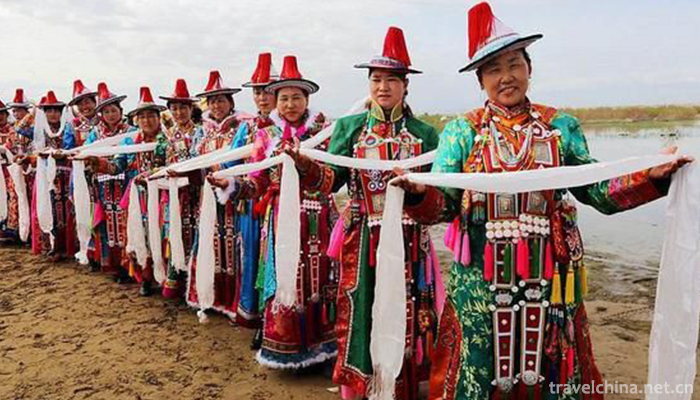
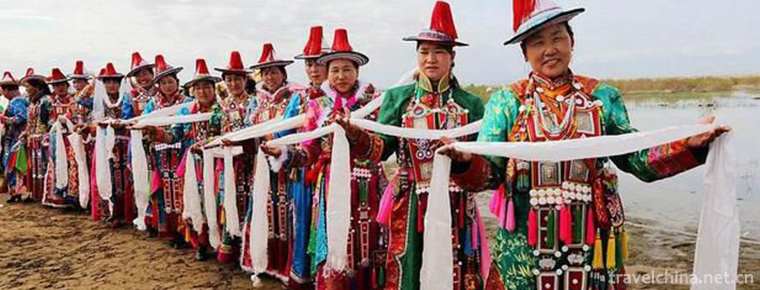
Yugur Costume
-
Sanhe ancient town Scenic Area
Sanhe Ancient Town Scenic Area is located in Feixi County, Hefei City, on the shore of Chaohu Lake, adjacent to Lujiang County and Shucheng County
Views: 189 Time 2018-12-08 -
Jiuquwan Hot Spring Resort
Views: 147 Time 2018-12-22 -
The Ancient City of Gaochang
Gaochang City, which began in the first century B.C., was built by the army of Tuntian in the territory of Cheshi in the Western Han Dynasty. The site of the Old Town is located in the vicinity of Har
Views: 212 Time 2019-01-12 -
Buyi Folk Songs
Bouyei folk songs have special features, such as ancient songs, narrative songs, love songs, wine songs and labor songs; solo, duet, chorus and duet in form; tunes are divided into major and minor. Ev
Views: 156 Time 2019-04-04 -
Mongolian camel ball
The intangible cultural heritage is the manifestation and cultural space of various traditional cultures which are inherited from generation to generation and closely related to people's life.
Views: 181 Time 2019-06-04 -
Small febrile coma
Xiao Redun is a kind of traditional Wu rhetoric banter popular in Jiangsu, Zhejiang and Shanghai. It is also known as "Xiaogongshu", commonly known as "selling pear ointment candy"
Views: 118 Time 2019-07-06 -
Zhangzhou Woodblock New Year Picture
Zhangzhou woodcut New Year pictures belong to folk art, which began in the Song Dynasty and flourished in the Ming and Qing Dynasties. The contents of the New Year pictures are mainly two categories:
Views: 159 Time 2019-07-25 -
Beijing Police College
Beijing Police College is a full-time general undergraduate college approved by the Ministry of Education, sponsored by the Beijing Municipal People's Government, administered by the Beijing Public Se
Views: 131 Time 2019-09-06 -
Jintang Yunding mountain scenic spot
Jintang Yunding mountain is located in the middle section of Longquan Mountain in Jintang County, Chengdu. The scenic spots include Yunding mountain, Hantan ancient ferry, Jintang small Three Gorges of Tuojiang River
Views: 218 Time 2020-11-05 -
Nanchong Sports
By the end of 2019, Nanchong has 37 national youth sports clubs, 5 new national fitness routes and 1623 national fitness routes. Our athletes won 67 medals in national competitions and 288 in provincial competitions.
Views: 136 Time 2020-12-17 -
Meishan City logo
Meishan City logo is composed of ancient Chinese tile pattern and Dongpo head portrait, which shows a feeling of ancient historical traces and reflects the ancient culture of Meishan. From the design to the font are used a simple style, using the combinatio
Views: 334 Time 2020-12-18
